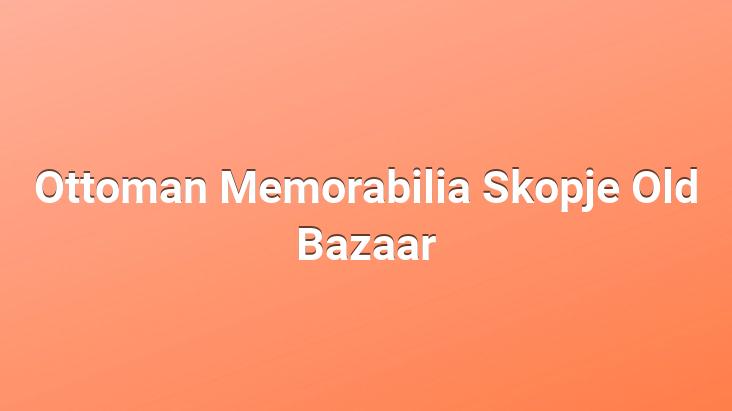Turkish Bazaar, which is known as the most important work that has survived to the present day in Skopje, the capital of Macedonia, which came under the rule of the Ottoman Empire in 1389, was one of the most important works of the Balkans during its period. managed to become one of the trade centers. In Macedonia, this bazaar is called the Old Bazaar or the Turkish Bazaar.
The historical bazaar, which is still a lively shopping center, 17. It was one of the most important trade centers of Bosnia, Kosovo, Serbia and Montenegro in the 19th century. The bazaar, which defies history and is one of the most important visitor centers for everyone who comes to Skopje, looks like an Anatolian city with its narrow streets, two-storey shops, mosques and fountains.
The homeland of Turks. There is a world with a wide perspective from leather and copper processors to souvenirs, from textiles to quilts in the bazaar, where one of the biggest longings of his travels abroad can be found. We are trying to walk with the smiles and intense interest of the shopkeepers who understand that we are talking.
While we are preparing for the rain, which is clear that it will fall on us soon, we want to be able to take a short market tour before the rain comes.
Yugoslavia Federation’ The Macedonian Government made a special law arrangement for the revitalization of the bazaar, which started to lose its vitality in the last period of the Ottoman Empire.. Within the scope of the works initiated by the law enacted to preserve the cultural heritage, traditional arts were encouraged and restoration was given importance. While there is information that there are 2 thousand 150 shops, squares and markets, it is stated that the bazaars are planned, the streets and sidewalks are clean, the roses, hyacinths and basil in the vases and pots that decorate the shops make the visitors and traders pleasant with their scent.. Evliya Çelebi said, “There are educated and honest people here.. In summer, the Skopje Bazaar resembles the shadows of Baghdad, and the covers in front of the shops remind us of Sarajevo and Aleppo.” we take shelter. We sing our meatballs and observe the environment in spite of the rain water flowing over the restaurant where we sit from the upper streets of the historical bazaar. Despite all the economic difficulties, she does not compromise on being smiling.. Even though we get bored with the interest, concern and warm attitude towards Turks from time to time, we are very happy to feel the feeling of being in a friendly and brotherly geography. we are starting. Sultan II, the largest mosque in Skopje. In the garden of Murat Mosque, we wash our hands and look at the complex, and pass to the castle in the company of stray dogs.
As the Vardar River, which flows right under the castle and divides Skopje in two, flows freely in my mind, I return to the old days in the land where many historical events are exhibited. … Since the texture around the castle is tried to be preserved, those who come to the bazaar definitely stop by the castle.
As the weather starts to get dark, we turn towards the hotel route.. The shops in the historical Turkish Bazaar are closing one by one as we walk.. We buy some souvenirs from one of the last shops closing. As it gets dark, we have the chance to see the illuminated state of the center, which looks like a sculpture construction site.
We cross over the Stone Bridge (Fatih Sultan Mehmet Bridge) to the other side of Vardar and watch the lights.. We leave ourselves to the voice of Vardar in the cooling air of Skopje.. We are coming to the end of the first day of the short Skopje tour.







